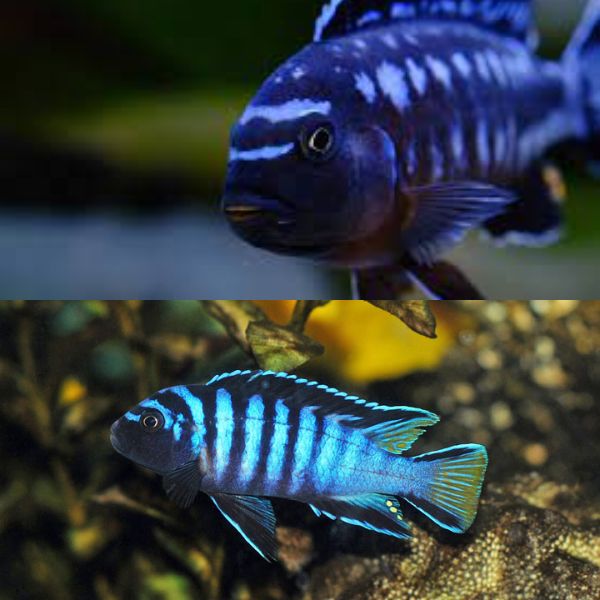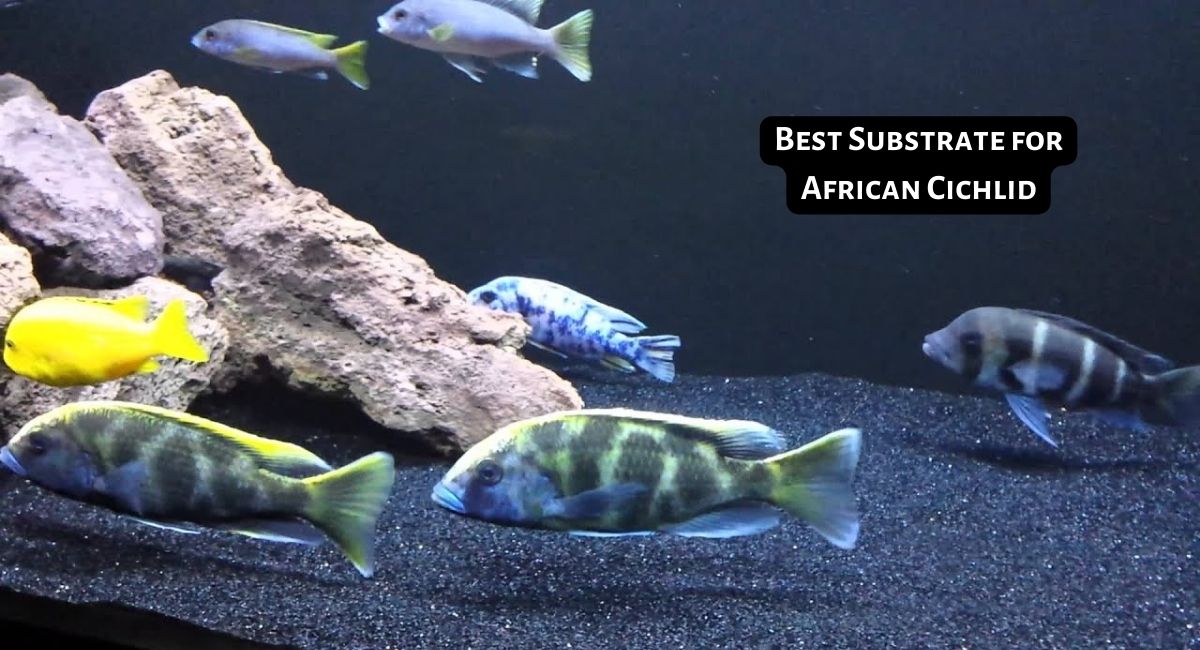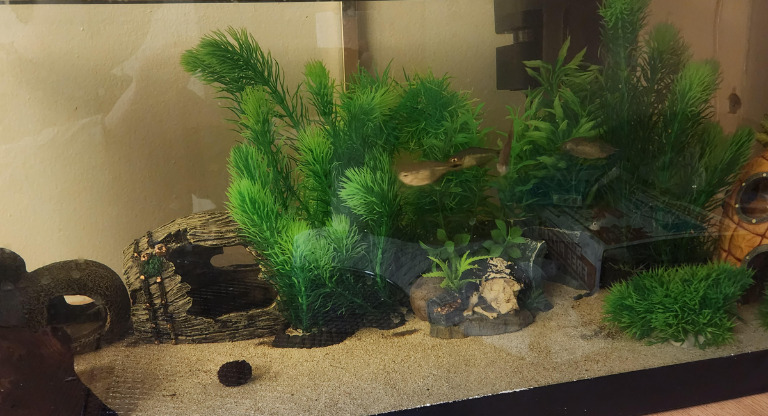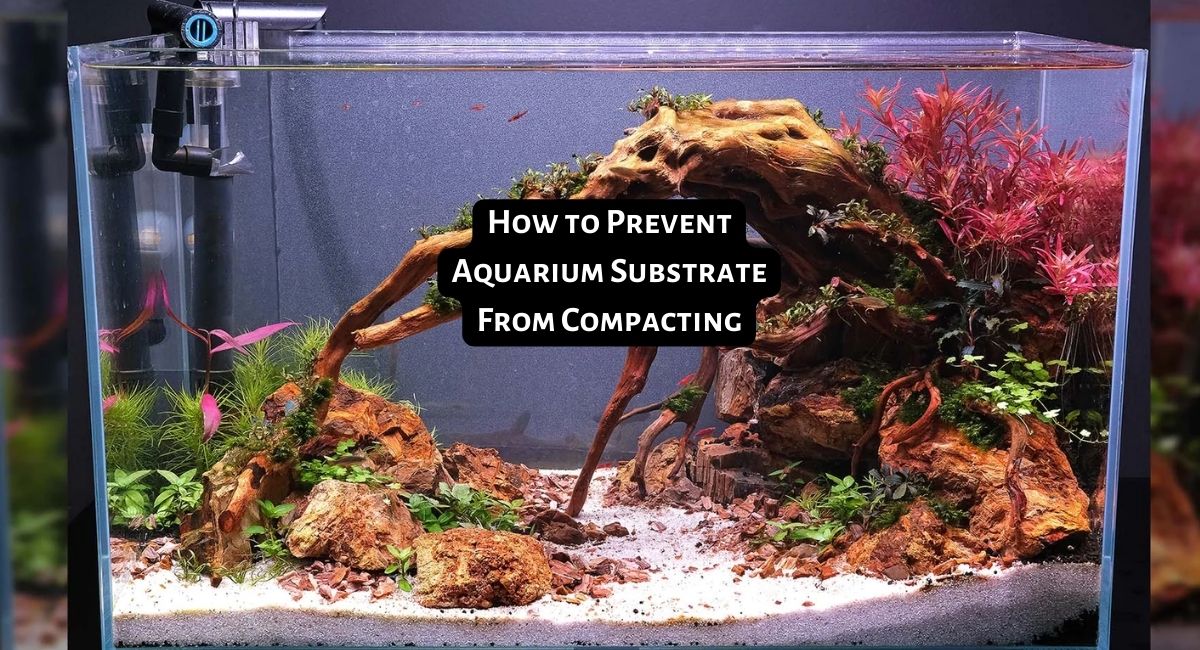Smartplantedaquarium.com participates in affiliate marketing programs. We may earn commissions on purchases made through our affiliate links. This doesn't affect our content or recommendations and we only recommend products we would put in our own tanks.
Are you setting up an aquarium for your African Cichlids? Choosing the right substrate is essential to ensure proper water quality, as well as providing natural elements that benefit the health of your fish. There are many substrates on the market to choose from and it can be difficult to decide which is best for your tank. Don’t worry, we’ve done the research to help you make an informed decision. In this blog post, we’ll discuss the best substrate for African Cichlid, along with factors to consider when selecting one. We’ll also highlight several of our favorite substrates on the market today.
Let’s get started!
TL;DR
African Cichlids require a substrate that is both safe and suitable for their needs. Sand or gravel can make great substrates, as they provide the necessary nutrients while also allowing African Cichlids to build burrows and find shelter. Additionally, natural rocks or driftwood can be added to provide additional hiding places and spawning surfaces. Ultimately, the best substrate for an African Cichlid is one that allows them to feel comfortable in their environment.
Contents
Best Substrate for African Cichlid
African cichlids are some of the most popular aquarium fish for their beautiful colors and interesting behavior. When setting up an African cichlid tank, one of the most important considerations is the substrate used. Different substrates can provide different benefits to these amazing fish, from providing natural hiding places to helping maintain water chemistry balance.
Here we’ll discuss the best substrate for African cichlid tanks and how to choose the right one for your needs. Let’s get started!
What are African Cichlids and their Types?
African cichlids are a group of fish that come from the family Cichlidae, and they are native to Africa. They can be found in both freshwater and brackish water habitats throughout the continent. African cichlids have become popular amongst aquarium hobbyists because of their bright colors and interesting behaviors.
There are hundreds of species of African cichlids, ranging in size, coloration, and temperament. In general, most African cichlids prefer warm waters with temperatures between 75-85 degrees Fahrenheit (24-29 Celsius). Some common types of African cichlid include Mbuna, Demasoni, Electric Blue Ahli, Frontosa, Peacocks and Haplochromis. In order for these fish to thrive in an aquarium, it is important to provide them with the right substrates.

Do African Cichlids Require Substrate?
African Cichlids are a popular and colorful aquarium fish, beloved by aquarists who value their vibrant coloration and lively behavior. African Cichlids originate from rivers and lakes in the Rift Valley of Eastern Africa, where they feed on insects, crustaceans, worms, zooplankton and algae. In the wild, these fish usually inhabit environments with sandy or muddy substrates that provide plenty of hiding places for them to hide when threatened or during spawning times.
When it comes to home aquariums, many aquarists believe that the best substrate for African Cichlids is one that mimics the environment found in their natural habitats. Sand is often considered to be the most suitable substrate for African Cichlids, as it provides the right texture and grain size to create caves and crevices for them to hide in. Sand is also easy to clean and maintain and won’t be as disruptive if water parameters change. Other substrates such as gravel can also be used, but they should be chosen carefully so they don’t cause damage or injury to the fish.
Are you struggling to choose the right substrate for your aquarium? Do you want to create a healthy and thriving ecosystem for your fish and plants? If so, check out our comprehensive guide on how to choose aquarium substrate. Our guide covers everything you need to know, from the benefits of different substrates to how to set up your aquarium for success. Don’t miss out on this valuable resource!
Is Substrate Helpful for African Cichlids?
Substrate, or the material used to line the bottom of an aquarium, is one of the most important components in providing a healthy environment for African cichlids. Substrates not only provide physical support and stability to the aquarium, but they also play a role in maintaining proper water quality and promoting biological filtration.
When choosing the best substrate for African cichlids, it’s important to consider its texture, grain size, color and composition. A fine-grained substrate such as sand is often preferred by aquarists because it closely replicates the natural riverbeds in which many African cichlids would typically live in their native habitats. Gravel is also acceptable provided that it is not too rough and sharp, as it can cause injury to the cichlids.
The color of the substrate you choose will also have an effect on how your African cichlid aquarium looks. Lighter colors tend to brighten up the tank, while darker colors create a more subdued aesthetic. It’s generally best to avoid brightly colored substrates that may look unnatural in your aquarium environment.
African Cichlid Aquarium Set-Up Guide
When setting up an aquarium for your African cichlids, one of the most important decisions you’ll make is choosing the right substrate. It’s essential to pick a substrate that will provide your fish with the necessary nutrients and create a healthy environment for them to live in.
What’s the Best Aquarium size for African Cichlids?
African cichlids are some of the most popular fish in the aquarium world. If you’re thinking about setting up an aquarium for them, it’s important to consider not only the size of the tank but also the best substrate for their environment.
The ideal aquarium size for African cichlids is at least 20 gallons. This will give them enough room to swim and allows for adequate filtration for their waste molecules. Keep in mind that the more cichlids you have, the bigger the aquarium should be.
What Do African Cichlids Like in Their Tank?
When it comes to choosing the best substrate for African Cichlids, there are a few things that you should keep in mind about these fish. African Cichlids prefer tanks with plenty of hiding areas, so be sure to include lots of rocks, plants and other decorations. They also like sand substrates as they help create burrowing areas, a minimum of four inches is best.
African Cichlids also prefer darker substrates like black sand or river pebbles as they show off their bright colors more effectively. Last but not least, African Cichlids should have an alkaline pH level so the substrate should be able to maintain that balance.
What is the Best Substrate for African Cichlids?
African cichlids tend to do best with substrate that mimics their natural environment. Here is a list of the best substrates for African cichlids:
- Sand – fine, white sand is often the preferred choice and allows many types of plants to be planted in your tank. Avoid too much dust as this can cloud the water and make it difficult for your fish to breathe.
- Gravel – small gravel is ideal, as this allows normal currents from filtration systems and pumps to move through the tank without being too disruptive to your cichlids. Colored gravels are also available, however if you choose these, make sure to rinse them thoroughly before adding it to the tank.
- Stones – rounded stones, such as lava rock or basalt are ideal for African cichlids because they mimic their natural environment. Not only do they provide a safe hiding place for your fish, but they also help keep the pH levels balanced in the aquarium.
- Pebbles – pebbles can be used to create a natural look in your tank. They also provide hiding spots for fry, as well as helping with filtration.
No matter what substrate you choose, it’s important to keep the aquarium clean and free of any debris or unwanted material. Regular water changes and cleaning will help ensure the health of your cichlids. Finally, make sure to keep an eye on your fish for any signs of stress or illness. If you notice anything out of the ordinary, consult with your local pet store or veterinarian.
Want to create the perfect environment for your African dwarf frogs? Check out our article on the best substrate for African dwarf frogs for expert tips and advice!
1. Sand for African Cichlid
Sand is a popular choice for many African cichlid tanks. It provides a natural, aesthetically pleasing look that simulates the environment in which these fish would live in nature. Sand can also provide some beneficial biological filtration as the bacteria within the sand break down ammonia and nitrates, helping to keep water quality stable.
| Advantages | Disadvantages |
|---|---|
| Natural look and feel, which is aesthetically pleasing | More expensive than other substrate options |
| Provides some beneficial biological filtration by breaking down ammonia and nitrates | Can be difficult to clean and maintain |
| Easier on the fish’s digestive system than gravel, since sand doesn’t get stuck in their gills and mouths | Can cause a buildup of detritus, which can lead to an increase in nitrates if not kept clean |
| Retains heat longer than other substrates, making it ideal for tanks with warm water species | Can be easily disturbed by fish, leading to cloudiness in the water. |
2. Gravel for African Cichlid
Gravel is one of the most popular substrates for African Cichlids, and it can be a great choice for your tank. Gravel helps to replicate an environment similar to what these fish would experience in their natural habitat, as it provides protection from predators, has plenty of places to hide, and even aids with burrowing. The gravel also provides a great surface for beneficial bacteria to grow, which helps to maintain proper water quality.
| Advantages | Disadvantages |
|---|---|
| Comes in an assortment of colors and sizes, providing a natural-looking tank that the fish will feel comfortable in. | Can easily become clogged with dirt and debris, making it difficult to clean. |
| Fairly inexpensive and easy to find in pet stores or online. | Edges of the gravel can be quite sharp, so caution should be taken when handling it or cleaning it. |
| African Cichlids often like to dig and burrow, so the gravel allows them to do just that. | If a fish decides to eat the gravel, it can cause blockages in the digestive tract. To prevent this, you should avoid putting small pebbles into your tank. |
3. Stones for African Cichlid
Stones are an ideal substrate for African Cichlids. They provide a natural setting, and come in a range of shapes and sizes to suit the needs of different cichlid species. Stones also help to create places for fish to hide, and can be used as part of a cave system or other decorative features in the aquarium.
| Advantages | Disadvantages |
|---|---|
| Natural setting, creating an attractive and realistic environment | Costly compared to other substrates |
| Provides hiding places and other decorative features | Stones are heavy and difficult to move around the aquarium |
| Smooth texture can help reduce stress levels in fish | Not suitable for plants, as they tend to block out the light from reaching them. |
| Easy to clean and maintain | Can be abrasive for the fish, which may cause damage to their scales or fins. |
| Available in different sizes and shapes to suit different cichlid species | Sharp edges of stones can injure fish if they are not smoothed down properly. |
| If the wrong size stone is chosen it could lead to injury or death of a cichlid due to them being unable to swim in. |
4. Pebbles for African Cichlid
Pebbles are a great substrate for African Cichlid tanks because they create a natural, aesthetically pleasing look and can easily be dyed to match the cichlid’s color. The partially-smooth surface allows them to burrow, while providing plenty of hiding places. Not only that, but the pebbles can help to keep the pH level in the tank stable.
| Advantages | Disadvantages |
|---|---|
| Helps to keep the tank clean and free of debris. | They can be difficult to clean if not regularly maintained and can cause water quality issues if left uncleaned. |
| Pebbles hold less dirt and waste than other substrates, | They can be difficult to move around when rearranging the tank and can easily be disrupted by filter flow. |
| such as sand or gravel, which means they need to be cleaned less often. | It can be tricky to choose the right size and color of pebbles that match your cichlid’s colors. |
Conclusion
In conclusion, selecting the best substrate for an African cichlid tank is an important decision for keeping these fish healthy and happy. A good substrate should have a pH around 6-7.5 with a dKH of 7-10, as well as the appropriate grain size to prevent physical damage to their delicate barbells. Sand or gravel can both make excellent choices depending on your desired look. Be sure to choose a quality substrate that’s free from any toxins or pollutants, and add plants and natural decorations to create more hiding places and spawning sites in the aquarium.
With the right substrate, you can provide a thriving home for your African cichlids!
Did you know that the right substrate can make a big difference in your betta fish’s health and happiness? Read our article on best substrate for betta fish to find out which type is right for your tank.
Frequently Asked Questions (FAQs)
1. Is substrate good for cichlids?
Yes, substrate is generally a good thing for cichlids. It helps provide essential minerals and nutrients that are beneficial to their health, as well as providing them with hiding places and additional space to explore. Substrate can also help stabilize the tank’s pH levels, which is important for African Cichlids in particular. As long as the parameters of the substrate (such as grain size) are suitable for the fish, it makes a great addition to an aquarium environment.
2. What is aragonite sand for African cichlids?
Aragonite sand is a type of calcium carbonate-based substrate that is ideal for African cichlid aquariums. It serves as an excellent source of essential minerals and helps to buffer the pH, which creates more stable water conditions. The grain size should be small enough so it doesn’t get sucked into your filter system or cause sharp edges on fish fins. Aragonite sand will not only provide beneficial bacteria but also make good hiding places for fish and create areas where they can build their own territories. Additionally, its beautiful natural color will give your African cichlid tank a stunning look.
3. What pH substrate for African cichlids?
The ideal pH value of the substrate for African cichlids is 7.5-8.5. A substrate with this pH range will provide a balanced environment that best suits the needs of your cichlid. Additionally, it is important to maintain regular water changes and clean the substrate on a weekly basis to keep it free from any pollutants or toxins that may harm your fish. Finally, for an even better overall result, you can add live plants to give them more hiding places and help reduce stress levels in their tank.






